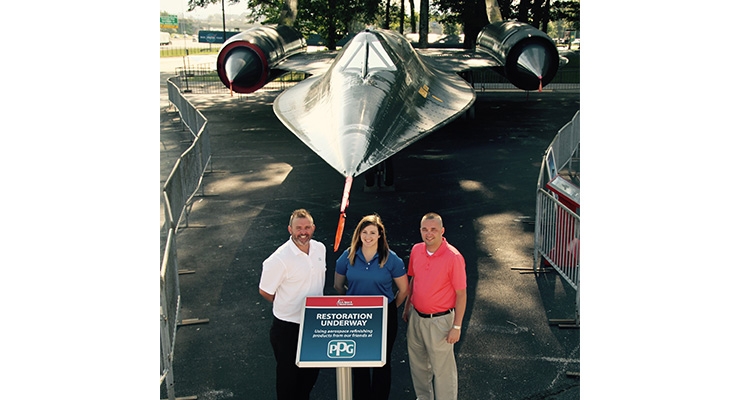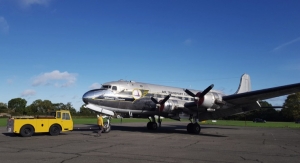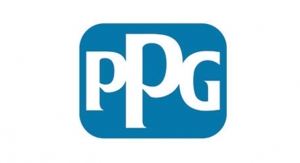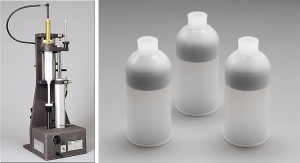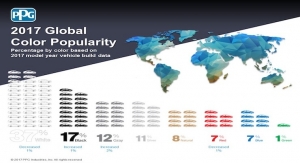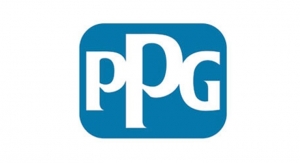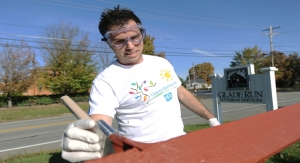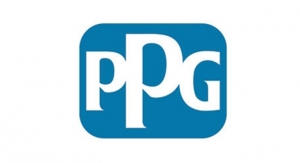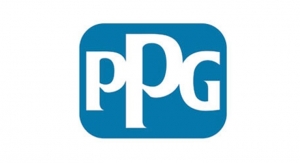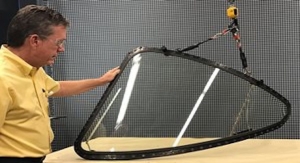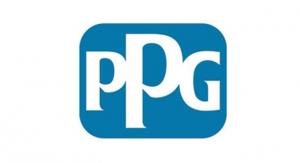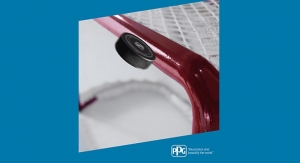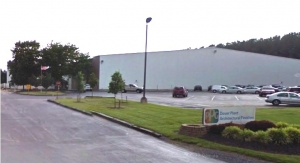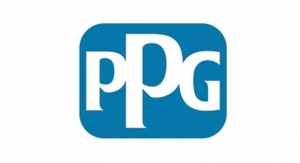11.01.17
When the U.S. Space & Rocket Center (USSRC) in Huntsville, Ala., began restoring an A-12 Oxcart, it took only a phone call to a nearby plant to obtain the aerospace coatings required to paint the legendary spy plane.
Tom Meyer, PPG plant manager, aerospace transparencies facility in Huntsville, arranged for PPG to donate military aerospace coatings for repainting the Cold War reconnaissance plane operated by the CIA.
"PPG has donated coatings for several aircraft-restoration projects, and the A-12 Oxcart was the most recent," Meyer said. "We have a valuable asset here in Huntsville with USSRC, and we appreciate being able to contribute our aerospace expertise and resources.”
Military aerospace coatings expert Duane Utter, PPG global segment manager, military coatings and defense products, worked with the USSRC’s curator in selecting the best products for the job. Instead of flat paint like the original, the curator requested a topcoat with a high-gloss finish that would weather better in the aircraft’s outdoor environment.
PPG donated nearly 90 gallons of PPG DESOTHANE HS 8201/F gloss military topcoat in midnight for the livery and four additional colors for markings. The company also contributed 30 gallons of PPG DESOPRIME HS 7233 military epoxy primer.
Utter said the high-solids primer resists corrosion, chemicals and solvents and has excellent adhesion to a variety of substrates, making it well-suited for the A-12 Oxcart’s unique, primarily titanium airframe. The high-solids topcoat has the superior color and gloss retention desired by the USSRC curator, so the plane should maintain its museum-quality finish for years to come.
The USSRC curator chose the livery and markings after extensively researching technical documents, historical records, recorded accounts in books and essays, and photographs. PPG manufactured the coatings at its Mojave, Calif., plant.
“Taking care of artifacts as large as the A-12 Oxcart is a tall order, but PPG’s people and paint are consistently up for the challenge here at the U.S. Space & Rocket Center," said Holly Ralston, executive director, U.S. Space & Rocket Center Education Foundation.
The A-12 Oxcart has been on display outside the USSRC’s main museum entrance since it was received in 1989 on loan from the National Museum of the U.S. Air Force.
Although the A-12 program was short-lived, with the first flight on April 30, 1962, and the last mission in May 1968, the aircraft was a pioneer for its stealth, speed and altitude capabilities. It reached a top speed above Mach 3 and an altitude of 90,000 feet. Only 12 of the aircraft and one trainer were produced, with seven aircraft and the trainer still in existence and on display in the U.S., including two others in Alabama.
The restoration of the A-12 Oxcart is part of the USSRC’s ongoing refurbishment of aircraft for which PPG is donating coatings. PPG’s aerospace business, which operates the Huntsville facility, previously donated coatings for the USSRC to paint an F-16 jet in a Red Tail livery commemorating Alabama’s Tuskegee Airmen, who served the U.S. during World War II, and for the restoration of an F-14 Tomcat fighter jet.
Additionally, the PPG Foundation has donated $55,000 in the past four years to the U.S. Space & Rocket Center Education Foundation for its AVIATION CHALLENGE programs and scholarships. Employees of PPG’s Huntsville aerospace facility also regularly participate as volunteers in USSRC and Aviation Challenge camp activities.
"Whether it’s helping with our artifacts or supporting our young Aviation Challenge trainees," Ralston said, "PPG preserves and protects both our history and future.”
Photo courtesy PPG
Tom Meyer, PPG plant manager, aerospace transparencies facility in Huntsville, arranged for PPG to donate military aerospace coatings for repainting the Cold War reconnaissance plane operated by the CIA.
"PPG has donated coatings for several aircraft-restoration projects, and the A-12 Oxcart was the most recent," Meyer said. "We have a valuable asset here in Huntsville with USSRC, and we appreciate being able to contribute our aerospace expertise and resources.”
Military aerospace coatings expert Duane Utter, PPG global segment manager, military coatings and defense products, worked with the USSRC’s curator in selecting the best products for the job. Instead of flat paint like the original, the curator requested a topcoat with a high-gloss finish that would weather better in the aircraft’s outdoor environment.
PPG donated nearly 90 gallons of PPG DESOTHANE HS 8201/F gloss military topcoat in midnight for the livery and four additional colors for markings. The company also contributed 30 gallons of PPG DESOPRIME HS 7233 military epoxy primer.
Utter said the high-solids primer resists corrosion, chemicals and solvents and has excellent adhesion to a variety of substrates, making it well-suited for the A-12 Oxcart’s unique, primarily titanium airframe. The high-solids topcoat has the superior color and gloss retention desired by the USSRC curator, so the plane should maintain its museum-quality finish for years to come.
The USSRC curator chose the livery and markings after extensively researching technical documents, historical records, recorded accounts in books and essays, and photographs. PPG manufactured the coatings at its Mojave, Calif., plant.
“Taking care of artifacts as large as the A-12 Oxcart is a tall order, but PPG’s people and paint are consistently up for the challenge here at the U.S. Space & Rocket Center," said Holly Ralston, executive director, U.S. Space & Rocket Center Education Foundation.
The A-12 Oxcart has been on display outside the USSRC’s main museum entrance since it was received in 1989 on loan from the National Museum of the U.S. Air Force.
Although the A-12 program was short-lived, with the first flight on April 30, 1962, and the last mission in May 1968, the aircraft was a pioneer for its stealth, speed and altitude capabilities. It reached a top speed above Mach 3 and an altitude of 90,000 feet. Only 12 of the aircraft and one trainer were produced, with seven aircraft and the trainer still in existence and on display in the U.S., including two others in Alabama.
The restoration of the A-12 Oxcart is part of the USSRC’s ongoing refurbishment of aircraft for which PPG is donating coatings. PPG’s aerospace business, which operates the Huntsville facility, previously donated coatings for the USSRC to paint an F-16 jet in a Red Tail livery commemorating Alabama’s Tuskegee Airmen, who served the U.S. during World War II, and for the restoration of an F-14 Tomcat fighter jet.
Additionally, the PPG Foundation has donated $55,000 in the past four years to the U.S. Space & Rocket Center Education Foundation for its AVIATION CHALLENGE programs and scholarships. Employees of PPG’s Huntsville aerospace facility also regularly participate as volunteers in USSRC and Aviation Challenge camp activities.
"Whether it’s helping with our artifacts or supporting our young Aviation Challenge trainees," Ralston said, "PPG preserves and protects both our history and future.”
Photo courtesy PPG

